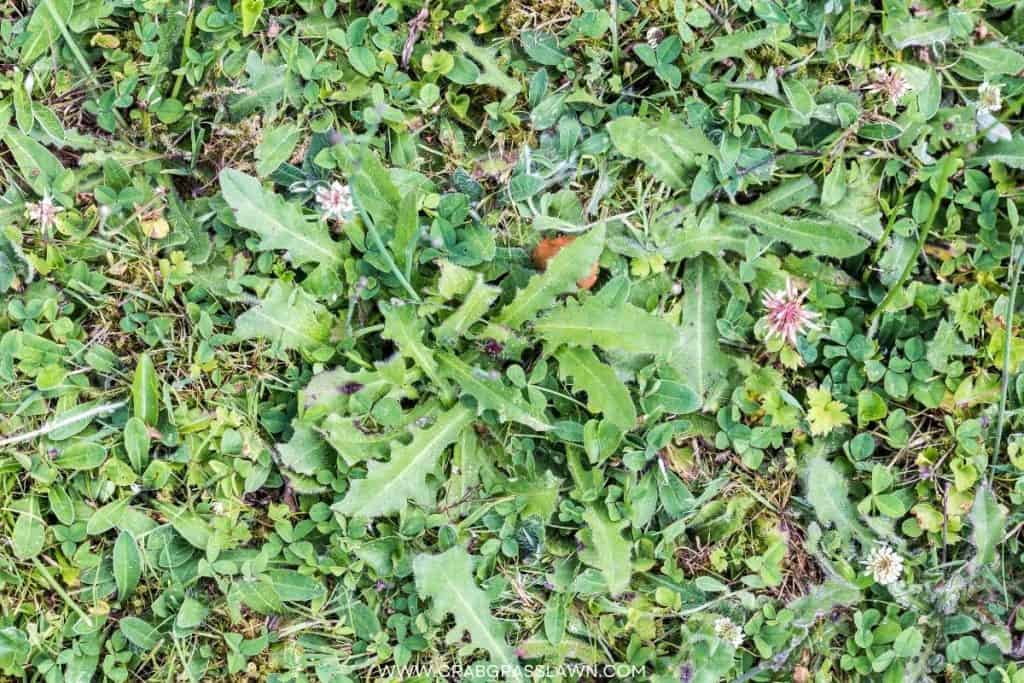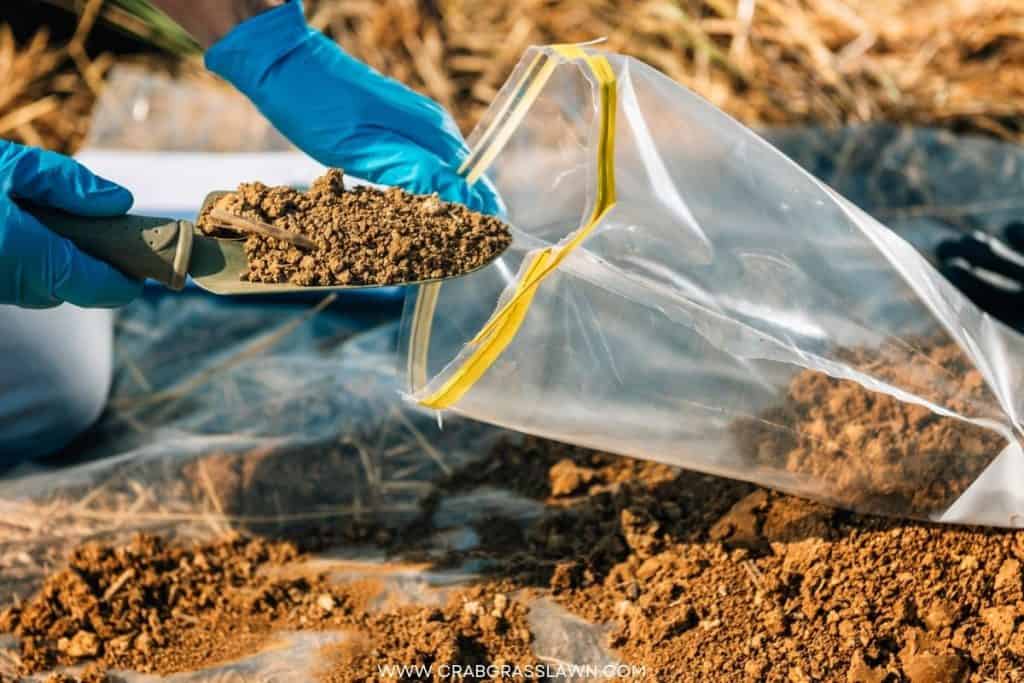I was speaking to my neighbor Joseph the other day about the poor grass growth and lawn moss occurring in his lawn, and recommended applying a good dose of lime to resolve the issue.
Surprisingly, Joseph had no clue about what type of lime I was referring to and asked “how many lemons do I need to squeeze?”
Well, the lime I was referring to isn’t the one you buy at the local grocery store but is limestone, more specifically dolomitic limestone or calcitic limestone that’s available at any home and garden center.
Liming isn’t limited to lawns but is a conditioning agent that many folks apply to their vegetable gardens, flower beds, and pastures.
If you aren’t sure whether lime is right for your lawn, and why, when, and how to apply it, this detailed guide will guide you on the right track.
What is Lime?
Just like lawn fertilizer including nitrogen fertilizer, lime is a soil amendment that replenishes the soil with essential nutrients such as calcium and magnesium.
It is made from ground limestone rock, which is naturally rich in calcium carbonate and sometimes magnesium carbonate.
When applied under the right conditions and at the right times with a spreader (drop spreader, broadcast spreader, rotary spreader, or agricultural spreader), these compounds work collectively to increase the pH level of the soil, resulting in soil that’s less acidic and more alkaline. Read about the differences between acidic and alkaline soil.
Even though agricultural limestone contains calcium and magnesium – two essential soil nutrients required for healthy grass growth including for cool-season grass and warm-season grass, it is not a substitute for fertilizer.
The primary role of agricultural ground limestone is to improve the availability of plant nutrients by altering soil pH levels and offsetting soil acidity.
Soil that’s too acidic can cause yellow spots, wilting grass blades, leaf blight, and stunted grass growth in your lawn.

Why Apply Lime to My Lawn?
There are myriad reasons to apply lime to a lawn, most notably:
- Low soil pH hinders nutrient availability – learn about the importance of a soil test
- Restore balance in overly acidic soil
- Prevent significant future lawn troubles
To know more, read my article on The Benefits of Adding Lime to Your Lawn
How Do I Know if My Lawn Needs Lime?
A soil test is always required to determine if your lawn needs lime, but there are a few other indicators your lawn needs help.
- A lawn plagued with weeds – Some weeds prefer acidic soil including dandelions, nettles, and plantain. The presence of these weeds serves as a great reminder to add lime to your lawn. Healthy turfs in most cases can resist most weeds on their own.

- Fertilizer has no impact – Applying fertilizer helps green up your lawn, but if this fails to happen, your soil may be too acidic.
Soil that’s too acidic will not absorb nutrients from the fertilizer, leading to a dull and brown lawn. - Plagued with pests – Healthy lawns keep pests at bay so if you notice too many pests strolling around your lawn, it means your lawn isn’t thriving.
- Drought and stress – If your turf is under drought and stress, only certain parts of the plants will take up nutrients. So, applying lime when the lawn is recovering from drought during the rainy season can help your turf regain its vibrance.

Why is Soil Testing Important?
A soil test helps determine several characteristics such as nutrient content, composition, acidity, pH level, etc.
There are several different purposes of soil testing such as to check the moisture level in the soil, contamination in the soil, and/or the amount of lime or other soil amendments your lawn needs.
Without a soil test, you’ll probably end up adding more lime to your lawn or less lime to your turf, both of which can harm your turfgrass rather than help it.

For example, adding too much lime to your lawn will indeed neutralize the acidity in the soil but will also make the soil too alkaline for the grass to thrive.
Contrarily, if you add less lime to your lawn, the acidity level of the soil won’t improve, which needless to say is a waste of effort.
Also, see my article on the different ways to test your soil PH.
Why Does Soil pH Keep Changing?
Several factors influence soil pH. Some of these are:
- Soil acidification – Soil pH decreases over time in warm, humid climates through a process called soil acidification, which is caused by high amounts of rainfall. However, soil weathering and leaching are less intense in dry climates and the pH of the soil can be neutral or alkaline.
- Depletion of nutrients – Grass and other plants use nutrients from the soil to grow, gradually decreasing soil pH levels.
- Beneficial microorganism activity – Beneficial microorganisms promote nutrient uptake in the soil and hence can alter soil pH. Learn about beneficial microorganisms in lawns.
The Kensizer Soil Tester is a home soil testing kit that delivers accurate results. It features a clear reading dashboard complete with an arrow pointer and wide-scale interval.
This plug-and-play soil test kit doesn’t require batteries and is lightweight and portable.
- Moisture/pH Testers in One Set - Clear reading dashboard with arrow pointer, wide scale interval, and large number. Lightweight and portable, making it convenient for on-the-go testing.
- No Battery Required -- Save you from changing the battery, simply plug and play. Kindly note that DO NOT leave the meter in the soil for a long time, prevent it from corroding.
- Single Probe Detection -- Make it easier to insert into the soil and lessen damage to the probe and get you more accurate data quickly. If the soil is too dry the probe will not move, water it before testing. Otherwise, it is easy to damge the probe causes the product not work. And insert the probe into the soil about 2-4 inches.
Affiliate links and images pulled from the Amazon Product Advertising API on: 2024-04-29
Read my article on the signs that your lawn needs lime.
When to Apply Lime for Lawn?
When to Add Lime to Lawns?
You should only apply lime if the soil pH level is too acidic. Acidic soil will have a pH below 7 and any number above is considered alkaline.
The ideal pH level for healthy grass growth depends on the hardiness zone where you live. In cooler regions, the pH level should be higher, and lower in warmer areas.
Adding to this, most turfgrasses will grow well in soil pH between 6.7 and 7, with some types doing well in lower levels.
- If your soil is too acidic, you will have to add lime to help neutralize it (raise pH) and bring it back to neutral.
- If the pH of the soil is too alkaline, you can lower the soil pH (make it more acidic) with sulfur.

There are a plethora of things that can cause acidic soil including:
- Organic matter and minerals can make the soil acidic when they are acidic and break down in the soil over time
- High-nitrogen synthetic fertilizers are usually ammonia-based and can soil acidity
- Rain and too much water can wash away key nutrients such as potassium, magnesium, and calcium from the soil
When is the Best Time to Put Down Lime?
The best time to apply lime is in the fall and spring. However, applying lime in the fall has a bigger advantage as the rain and snow will help the lime break down and get to work.
Fall is also a good time for lime application as it gives the lime plenty of time to neutralize the soil before the next growing season.
What is the Best Month to Lime Your Lawn?
Fall runs from September 1 to November 30, which is the perfect period to apply lime to your lawn. Many gardeners prefer to test their soil in the spring and apply lime before the first frost.
This is the right time for liming a lawn because the soil is in a better condition to absorb the lime.
Refrain from spreading lime on a dry, wilted, or soggy, wet lawn or during frosty weather. If you haven’t spread grass seed yet, lime the lawn just before you plant.
How Often Should You Put Down Lime on Your Lawn?
One of the downsides of using lime to reduce acidity in the soil is that it can take a while to work its way into the soil after it’s applied, somewhere between 2 to 3 years.
You may however see the benefits of lime in the first few months after application. Therefore, you should only apply lime to your lawn every 2 – 3 years.
How Long Does Lime Last in the Soil?
The amount of time lime will last in the soil depends on several factors such as total soil acidity, the kind and amount of clay, the amount of organic matter, and the type of lime used.
For example, pelletized lime generally reduces soil acidity to tolerable levels within a year.
How to Apply Lime for Lawn?
How To Apply Lime To Your Lawn & Soil
The first and most important thing to do is put on safety gloves, and eyewear and wear protective clothing to prevent any skin irritation when performing lime lawn treatment.
It’s never a good idea to spread lime by hand even with gloves on because it’s not a safe practice and isn’t as effective as using a drop or rotary spreader.
- Prepare the spreader – There are two types of spreaders – drop spreaders and rotary spreaders available for uniform coverage of lime in your lawn.
Set the spreader on a flat surface, and fill it with lime until the fill line. - Apply the lime – For even coverage, walk the entire perimeter of your lawn or the area you want to cover. This will create the initial outline to work within and make the turns when necessary.
- Cover the entire area – Next, walk in straight lines back and forth until you’ve covered the entire outlined area.
- Apply a second round – After the first round, apply a second round by walking in lines that run perpendicular to the first set of lines you made.
- Water the entire area generously to allow the lime to soak into the soil and wash away any excess lime particles stuck on the grass blades.
- Check the soil PH in a month to see if the acidity level of the soil has improved.
As mentioned earlier, lime is a slow-acting mineral so it may take a while to see any considerable improvement in the soil pH level.
How Much Lime Should I Apply?
You don’t need to apply too much lime to your lawn, but approximately 50 lbs per 1,000 square feet should do the trick.
If you’re applying more than 50 lbs of lime, divide it into two applications, first in the early spring and another the next fall.
Can You Put Too Much Lime On Your Lawn?
Applying excess lime will improve soil acidity but will also make the soil too alkaline for turfgrass to grow.
This may cause the grass blades to turn yellow and the plants will have a hard time trying to absorb the nutrients that are already available in the soil.
Type of Lime for Lawns
There are two types of lime for lawns and gardens:
- Dolomitic lime
- Agricultural lime
Often referred to as garden lime, agricultural lime is made from calcium carbonate and dolomitic lime from a type of rock very similar to limestone called dolomite.
The only difference between the two types is that dolomitic lime also supplies magnesium, a nutrient that’s often low in soils in many areas.
Lime for lawns is only available in granular form at your local garden center or online.
Best Lime for Lawn – My Recommendations
Here are my top 2 picks:
1. Earth Science Fast Acting Lime – Best Fast Acting Lime for Lawns
The Earth Science fast-acting lime covers approximately 5,000 square feet and works quickly to raise the pH levels of the soil.
Adding to this, it naturally bonds with the soil to help prevent nutrient runoff.
- Size : 25 lb.
- Coverage Area : 5000 sq. ft.
- Granules form
Affiliate links and images pulled from the Amazon Product Advertising API on: 2024-04-29
2. Jobe’s 09365 Additive De-Acidifier – Best Lime for Lawns and Gardens
Jobe’s lime can be used for lawns and gardens and helps keep acidic soil levels in check. It is formulated with all-natural ingredients and is ideal for use with hydrangeas and blueberries.
- Organic granular for increasing soils alkalinity, pH; Low pH can cause poor fertilizer response and soil structure
- Most plants grow well in a pH between 6 and 7, with 6.5-6.8 being ideal; below 6.0 Many nutrients cannot be absorbed
- Adding garden lime will increase the pH and make those nutrients available again; test soil pH before applying
Affiliate links and images pulled from the Amazon Product Advertising API on: 2024-04-29
Maintaining Your Lawn’s pH
You should always aim to maintain a soil pH between 6.0 and 7.0 – any lower or higher may result in unhealthy turf.
The best way to keep tabs on your soil pH is by performing a soil test at least once a year.
Further, it’s highly recommended that you apply the right type of fertilizer for your soil type and in the right quantities because going overboard can cause fertilizer burn.
When to Hire a Professional
If you don’t have the knowledge or expertise to add lime or maintain your lawn, you should consider hiring a lawn care professional.
Apart from maintaining a healthy lawn, lawn care specialists can help you save a handsome sum of cash on mistakes that they will have to fix.
FAQs
Q. Does Lime Kill Grass?
A. Lime is beneficial for soil and grass and will only damage grass if used in excess quantities or if used when not necessary.
Q. Is Lime Harmful For Pets or People?
A. Lime can be harmful to pets and people when lime dust is inhaled. Breathing in powdered lime can cause severe damage to the lungs and esophagus.
Q. How Long After You Put Lime on Your Grass Can Your Dog Go Outside On the Grass?
A. It is best to wait at least 24 hours after lime application to let your dog (s) on the grass.
Q. Can You Apply Lime And Fertilizer At The Same Time?
A. Lime and fertilizer help improve the condition of your soil but serve different purposes.
Fertilizers including synthetic and organic fertilizers feed your turfgrass with essential nutrients.
And lime simply reduces the acidity levels in the soil so that the nutrients are easier to absorb.
Before adding either lime or fertilizer, it’s important to perform a soil test to determine which of the two products will be beneficial for your lawn.
If your lawn is acidic, add lime first to neutralize the soil pH and then add appropriate fertilizer to boost grass growth.
Here’s an informative video about Applying Lime Treatments to your lawn:
Final Thoughts
Adding lime can help improve acidity levels in your soil and the health of your lawn grass and should be applied only after performing a soil test.
The best time to apply lime is in the fall and is easy to do with a garden spreader. Lime takes a while to work its way into the soil so you should wait for at least a year before a second application.
Hi, Alex Kuritz here. Growing up I remember that my family had one of the best lawns in the neighborhood. Richly green and lush. I did a lot as I grew up in terms of caring and tending for not only my family’s lawn but also my neighbors. I can say I have years of experience, and I am here to share it with you.





